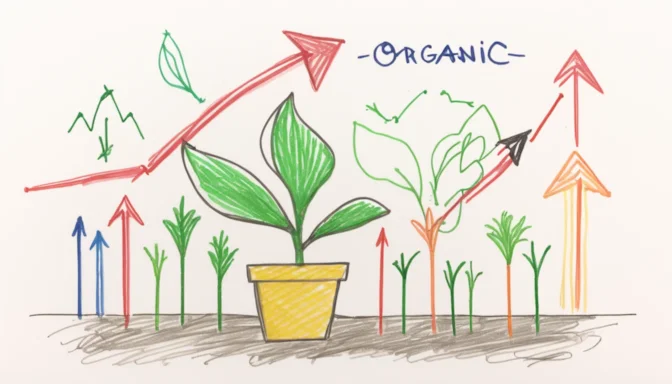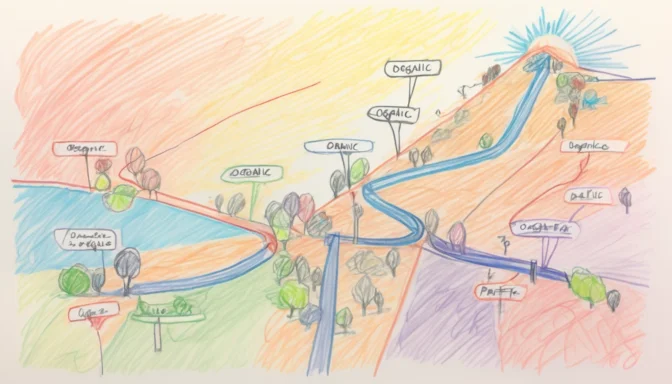Why is it Called Organic Traffic?

The term 'organic traffic' refers to visitors that land on your website as a result of unpaid search results. It's deemed organic because it grows naturally, without the aid of paid advertising, akin to organic growth in nature.
Differences Between Organic and Inorganic Traffic
Organic traffic is the result of unpaid search engine listings, while inorganic, often synonymous with paid traffic, stems from paid advertising efforts. The primary difference lies in the cost: organic traffic is free, whereas inorganic traffic is not.
Organic Traffic vs Paid Traffic
Organic traffic is synonymous with natural reach—achieved through SEO or organic social media presence. Paid traffic, conversely, is the outcome of paid marketing activities such as PPC campaigns or sponsored content.
Is Organic Traffic Really Free?
Organic traffic is often touted as 'free' because it doesn't require direct payment for traffic acquisition. However, indirect costs may be incurred through investments in SEO strategies and tools.
Advantages of Paid Traffic Over Organic
Paid traffic offers immediacy and precision targeting, making it ideal for time-sensitive campaigns. It provides a level of control and scalability that organic traffic typically cannot match.
Disadvantages of Organic Traffic
The unpredictability of organic traffic can pose challenges, as visibility in search results is not guaranteed. This lack of control can make it difficult to plan and forecast marketing outcomes.
Reasons for a Drop in Organic Traffic
A decline in organic traffic can be alarming, often triggered by algorithm updates, site changes, or decreased content relevancy. Vigilant monitoring and adaptation are key to sustaining organic traffic levels.
Examples of Organic Traffic
Visitors arriving from search engines like Google or Bing exemplify organic traffic. This type of traffic is the lifeblood of SEO efforts, driving users to your site based on content relevance and quality.
Is Organic Traffic Worth the Effort?
The investment in organic traffic often yields a substantial return, as it targets users actively seeking your content. Its cost-effectiveness and alignment with user intent make it an invaluable long-term marketing approach.
 E-Commerceo
E-Commerceo
